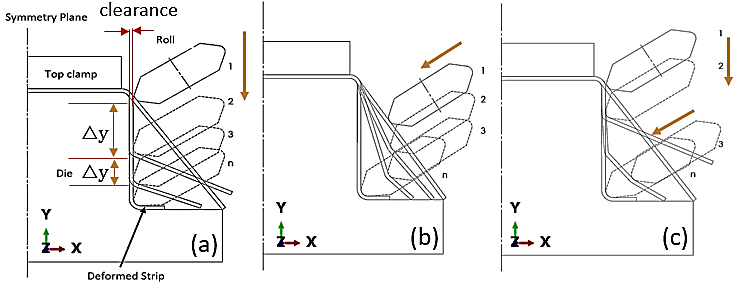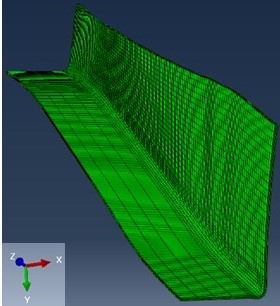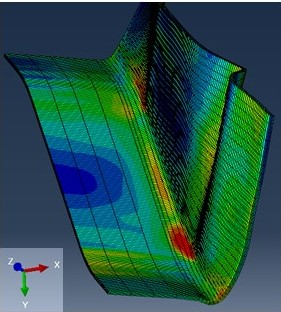Incremental Shape Rolling of Automotive Structural Components
Researcher: Abdelrahman Essa
Aim:
This project provides a new cold forming method that can produce complex prototypes of HSS with higher part’s quality compared to other cold forming processes; this may lead to wider uptake of this technology in the automotive industry.
Background:
Carmakers are seeking to use Advanced High Strength Steel (AHSS) to reduce the weight of vehicles and carbon emission. However, forming of AHSS by cold forming processes is challenging due to their high strength and limited ductility. Even though roll forming can form AHSS, it is limited to produce constant cross-sections. Therefore, Flexible Roll Forming (FRF) was developed to produce complex shapes, however, the formed parts by FRF suffer high wrinkling and there is no comprehensive answer so far about how to eliminate wrinkling in FRF. Incremental Sheet Forming (ISF) can significantly eliminate the flange wrinkling due to the localized deformation, through-thickness shear and the applied stretching to the formed flange, but it can’t produce long parts which are commonly used in the automotive industry for structural components.
This project offers a new process namely Incremental Shape Rolling (ISR), where the FRF setup is used along with utilizing the deformation modes of the ISF processes to produce long components of AHSS with a significant reduction in wrinkling compared to FRF.
Methodology:
Abaqus implicit will be used to simulate the ISR process. First, simple shapes will be formed by ISR to prove the concept, then, ISR will be used to form complex shapes of AHSS. The numerical simulations of the ISR process will be experimentally validated using Deakin’s FRF facility. The hypothesis of ISR will be tested by comparing the deformation mechanisms of ISR with those of FRF. Different forming sequences will be implemented to investigate the effect of process parameters on the flange wrinkling (Fig-1). In addition to that, different AHSS and pre-cut geometries will be formed to investigate the effect of material and geometrical parameters. By doing that we can establish the shape limit and material strength level that can be achieved by ISR.
  |
| Figure 1 the ISR process; (a-c) front views of the different forming sequences, and (d) the side view shows the potential longitudinal movements of the forming roll. |
Key Findings to date:
Variable depth profile of DP780 has been formed by ISR and FRF. The flange wrinkling was investigated and the results showed that the severity of the wrinkling in ISR is 7.5 times lower (Fig-2). The results further suggested that this reduction in wrinkling is due to the localized deformation, high shear strain and stretching along the flange in ISR.
 |
 |
| (a) | (b) |
Figure 2 The half of the variable depth profile with symmetric BCs about Y-Z plane formed by (a) ISR, and (b) FRF.
Future Work:
- Experimental validation of the numerical results.
- Investigations of the effect of process, material and geometrical parameters on forming stresses and flange wrinkling.
Contact:
Abdelrahman Essa
Institute for Frontier Materials (IFM)
Deakin University, Geelong
Email: [email protected]
Leave a Reply
You must be logged in to post a comment.